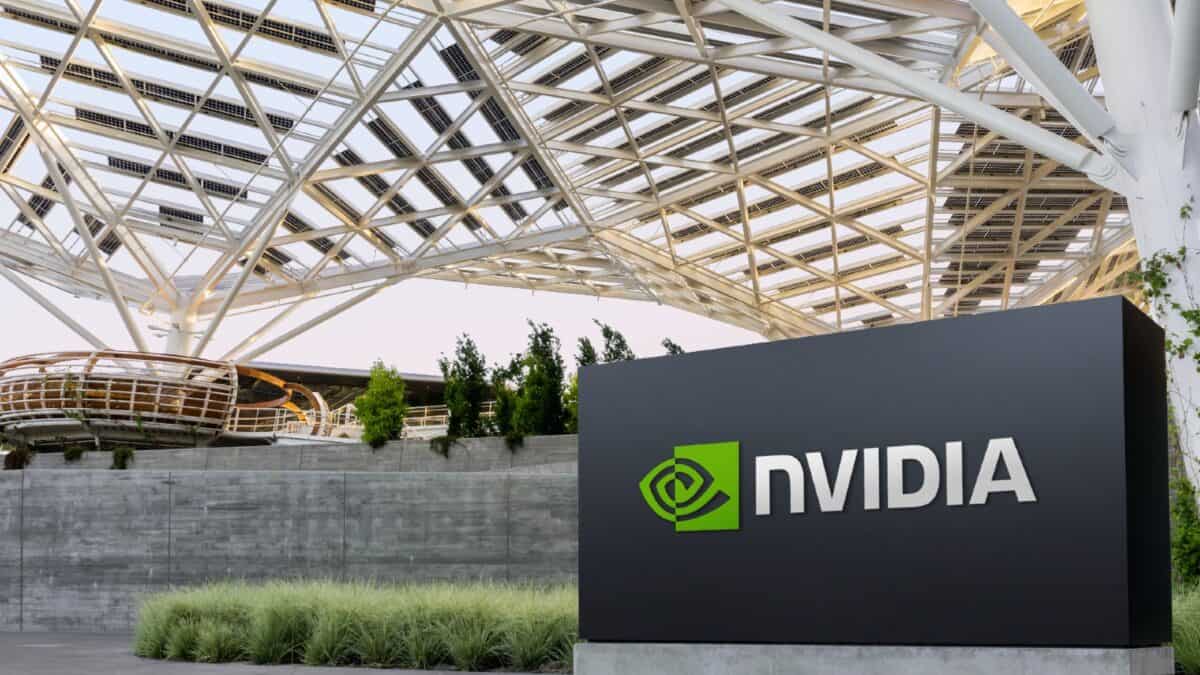Nvidia (NASDAQ: NVDA) stock has had a great run. Over the last five years, it’s risen from around $40 to $599 – a gain of about 1,400%.
Here, I’m going to look at where the growth stock could be in another five years. Let’s dive in.
Leading the AI revolution
Before I get into the forecasts, it’s worth briefly looking at what the company does. Nvidia is a technology company that develops high-performance graphics processing units (GPUs) or ‘accelerated computing’ solutions.
Should you invest £1,000 in Phoenix Group Holdings Plc right now?
When investing expert Mark Rogers has a stock tip, it can pay to listen. After all, the flagship Motley Fool Share Advisor newsletter he has run for nearly a decade has provided thousands of paying members with top stock recommendations from the UK and US markets. And right now, Mark thinks there are 6 standout stocks that investors should consider buying. Want to see if Phoenix Group Holdings Plc made the list?
These GPUs are used across a range of industries from video gaming to cloud computing. However, it’s artificial intelligence (AI) where they’ve been a real hit.
Today, Nvidia’s GPUs are used by all the heavyweights in the AI space, including Microsoft, Google, and Meta Platforms. Meta, for example, just said it’s on track to own 350,000 Nvidia H100 GPUs by the end of the year (these cost around $30,000 each).
Given its position in the AI space, the outlook for the company appears to be attractive.
Sales forecasts
Now, predicting a stock’s future price is never easy. That’s because it involves making a lot of assumptions and forecasts.
But let’s give it a go, using a sales-multiple approach. This involves trying to predict what the company’s sales will be and then applying a certain multiple to get a market-cap and stock price.
For the year ending 31 January, Nvidia’s sales are projected to rise 119% year on year to $59.1bn. The following year, they’re expected to rise 57% to $92.9bn (let’s assume these forecasts are accurate).
I don’t expect sales to continue growing at this rate after FY2025. But I do expect them to continue rising at a high rate, given the company’s dominance in the AI space.
With that in mind, here are some projections for sales at different growth rates.
| FY2024 | FY2025 | FY2026 | FY2027 | FY2028 | FY2029 | |
| Sales ($bn) at 20% growth | $59 | $93 | $111 | $134 | $161 | $193 |
| Sales ($bn) at 30% growth | $59 | $93 | $121 | $157 | $204 | $265 |
| Sales ($bn) at 40% growth | $59 | $93 | $130 | $182 | $255 | $357 |
| Sales ($bn) at 50% growth | $59 | $93 | $139 | $209 | $314 | $470 |
Looking at the table, we can see that if sales were to grow at 30% a year between FY2025 and FY2029, we’d be looking at revenue of $265bn for the year ending 31 January 2029. If they were to grow at 50% a year, we’d be looking at sales of $470bn.
Share price forecasts
The next step is to apply a sales multiple to get a projected market-cap and share price forecast (we can work out the share price forecast by using today’s market-cap of $1,480bn).
Now, over the last five years, Nvidia’s price-to-sales ratio has ranged from about 8 to about 35, with the average around 20.
So let’s apply three different price-to-sales multiples to the sales forecasts – 10, 20, and 30.
Price-to-sales ratio of 10:
| FY2029 sales ($bn) | Market-cap ($bn) | Share price forecast |
| $193 | $1,930 | $781 |
| $265 | $2,650 | $1,073 |
| $357 | $3,570 | $1,445 |
| $470 | $4,700 | $1,902 |
Price-to-sales ratio of 20:
| FY2029 sales ($bn) | Market-cap ($bn) | Share price forecast |
| $193 | $3,860 | $1,562 |
| $265 | $5,300 | $2,145 |
| $357 | $7,140 | $2,890 |
| $470 | $9,400 | $3,804 |
Price-to-sales ratio of 30:
| FY2029 sales ($bn) | Market-cap ($bn) | Share price forecast |
| $193 | $5,790 | $2,343 |
| $265 | $7,950 | $3,218 |
| $357 | $10,710 | $4,335 |
| $470 | $14,100 | $5,707 |
Looking at these numbers, we can see that if Nvidia’s sales were to grow 30% a year between FY2026 and FY2029 to $265bn, and we apply a price-to-sales multiple of 10, the share price forecast comes out at $1,073. If we apply a multiple of 30 to the same figure, it comes out at $3,218.
Now, I want to stress that these calculations are very simplistic. I’m making a lot of assumptions here. For instance, I’m assuming that the number of Nvidia shares in circulation stays the same. And they could be way too optimistic.
I’m ignoring risks such as a downturn in chip demand or major competition from a rival such as AMD.
Overall though, I’m pretty bullish on Nvidia looking at these numbers. I think there’s a good chance the stock will be priced over $1,000 in five years.








